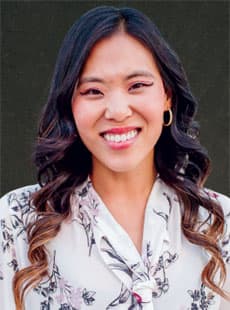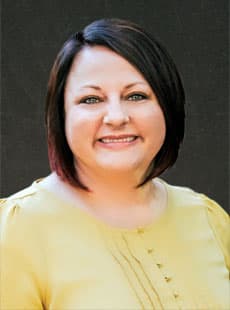Utah Core
•
Curriculum Search
•
All Mathematics - Secondary Lesson Plans
•
USBE Mathematics - Secondary website
Educational Links
Strand: FUNCTIONS - Linear and Exponential (F.LE)
Construct and compare linear and exponential models and solve problems (Standards F.LE.1- 3). Interpret expressions for functions in terms of the situation they model. (Standard F.LE.5).Standard F.LE.5
Interpret the parameters in a linear or exponential function in terms of a context. Limit exponential functions to those of the form f(x) = bx + k.
-
Carbon 14 dating in practice I
In the task ''Carbon 14 Dating'' the amount of Carbon 14 in a preserved plant is studied as time passes after the plant has died. In practice, however, scientists wish to determine when the plant died and, as this task shows, this is not possible with a simple measurement of the amount of Carbon 14 remaining in the preserved plant. -
DDT-cay
The purpose of this task is for students to encounter negative exponents in a natural way in the course of learning about exponential functions. -
FUNCTIONS - Linear and Exponential (F.LE) - Sec Math I Core Guide
The Utah State Board of Education (USBE) and educators around the state of Utah developed these guides for the Secondary Mathematics I - Linear and Exponential (F.LE). -
Illegal Fish
This task asks students to interpret the relevant parameters in terms of the real-world context and describe exponential growth. -
Introduction to the Materials (Math 1)
Introduction to the Materials in the Mathematics One of the The MVP classroom experience begins by confronting students with an engaging task and then invites them to grapple with solving it. As students ideas emerge, take form, and are shared, the teacher orchestrates the student discussions and explorations towards a focused mathematical goal. As conjectures are made and explored, they evolve into mathematical concepts that the community of learners begins to embrace as effective strategies for analyzing and solving problems. -
Mixing Candies
This task assumes students are familiar with mixing problems. This approach brings out different issues than simply asking students to solve a mixing problem, which they can often set up using patterns rather than thinking about the meaning of each part of the equations. -
Module 1: Sequences - Student Edition (Math 1)
The Mathematics Vision Project, Secondary Math One Module 1, Sequences is written as two intertwined learning cycles that begin by alternating from arithmetic sequence to geometric sequences, so students can compare and contrast features as they represent both types of sequences with tables, graphs, story contexts, diagrams, and equations. -
Module 1: Sequences - Teacher Notes (Math 1)
The Mathematics Vision Project, Secondary Math One Module 1 Teacher Notes, Sequences is written as two intertwined learning cycles that begin by alternating from arithmetic sequence to geometric sequences, so students can compare and contrast features as they represent both types of sequences with tables, graphs, story contexts, diagrams, and equations. -
Module 2: Linear & Exponential Functions - Student Edition (Math 1)
The Mathematics Vision Project, Secondary Math One Module 2, Linear and Exponential Functions, begins with a learning cycle that introduces contexts with continuous domains and defining linear functions as having a constant rate of change and exponential functions as having a constant ratio over equal intervals. -
Module 2: Linear & Exponential Functions - Teacher Notes (Math 1)
Mathematics Vision Project, Secondary Math One Module 2 Teacher Notes, Linear and Exponential Functions, begins with a learning cycle that introduces contexts with continuous domains and defining linear functions as having a constant rate of change and exponential functions as having a constant ratio over equal intervals. -
Newton's Law of Cooling
The coffee cooling experiment in this task is a popular example of an exponential model with immediate appeal. The model is realistic and provides a good context for students to practice work with exponential equations. -
Possible or Not
Students can look at graphed functions from real-life examples and determine whether the graph makes sense or not in this activity. -
Profit of a company, assessment variation
The primary purpose of this task is to assess students' knowledge of certain aspects of the mathematics described in the High School domain A-SSE: Seeing Structure in Expressions. -
Saturating Exponential
The context here is a familiar one: a cold beverage warms once it is taken out of the refrigerator. Rather than giving the explicit function governing this warmth, a graph is presented along with the general form of the function. Students must then interpret the graph in order to understand more specific details regarding the function. -
Stairway - Student Task
This task students to design a stairway for a custom home. They will need to gather information regarding design, safety, and the utility of staircases. -
Taxi!
This simple conceptual problem does not require algebraic manipulation, but requires students to articulate the reasoning behind each statement. -
US Population 1982-1988
This task provides a preliminary investigation of mathematical modeling using linear functions. In particular, students are asked to make predictions using a linear model without ever writing down an equation for a line. As such, the task could be used to motivate or introduce the observation that linear functions are precisely those that change by constant differences over equal intervals.


 UTAH EDUCATION NETWORK
UTAH EDUCATION NETWORK

 Justin
Justin Braxton
Braxton Dani
Dani Kayla
Kayla Katie
Katie Matthew
Matthew Rob
Rob Val
Val
